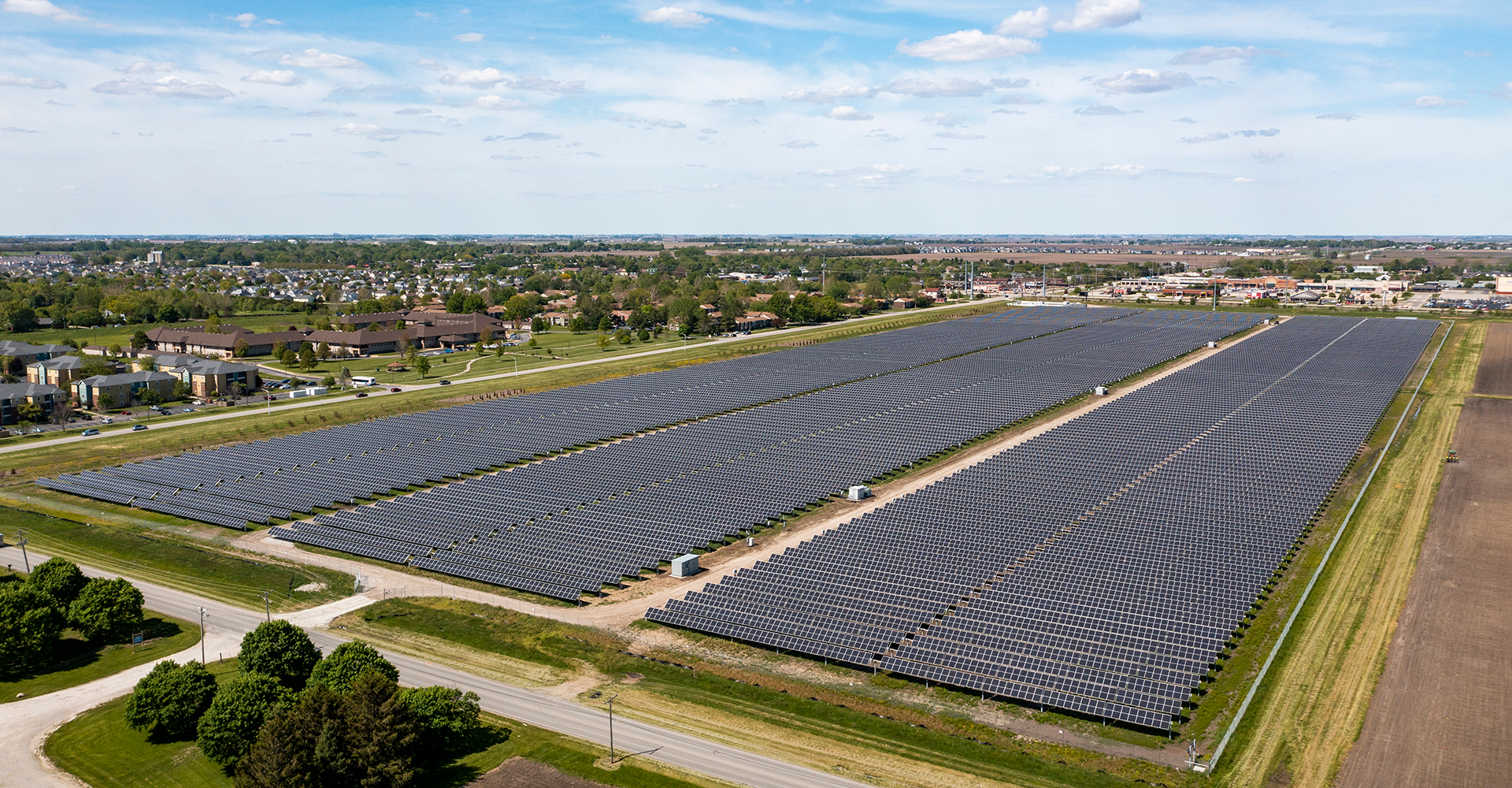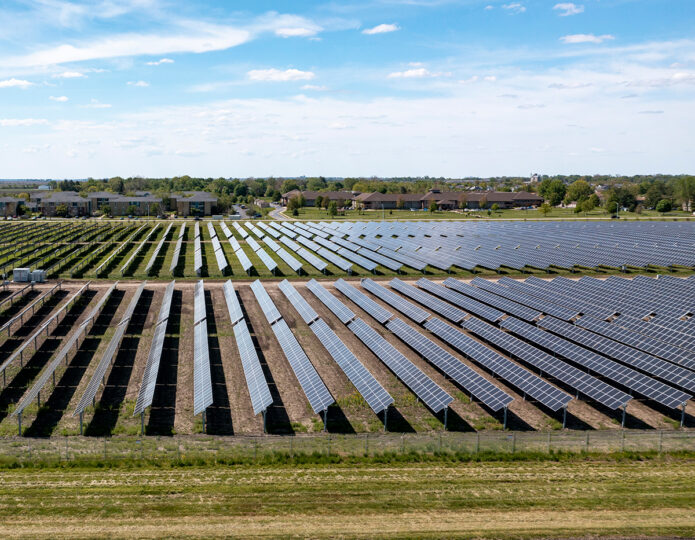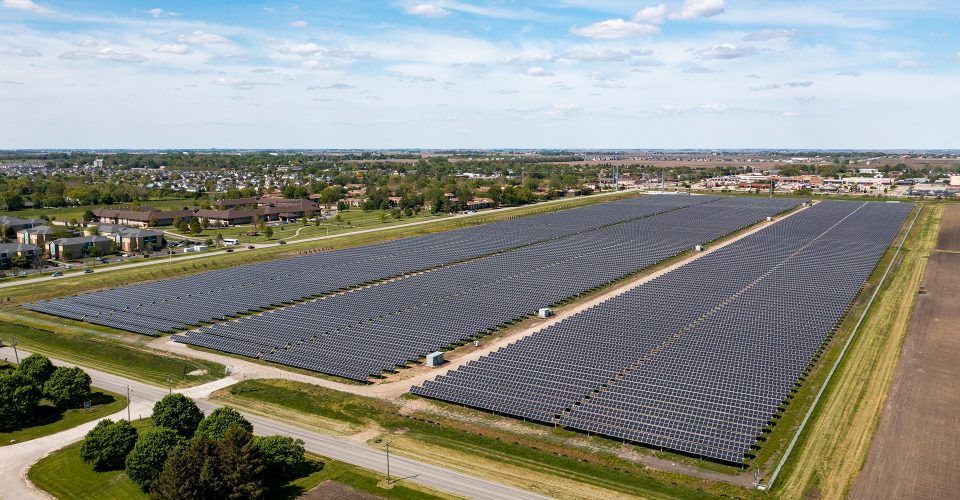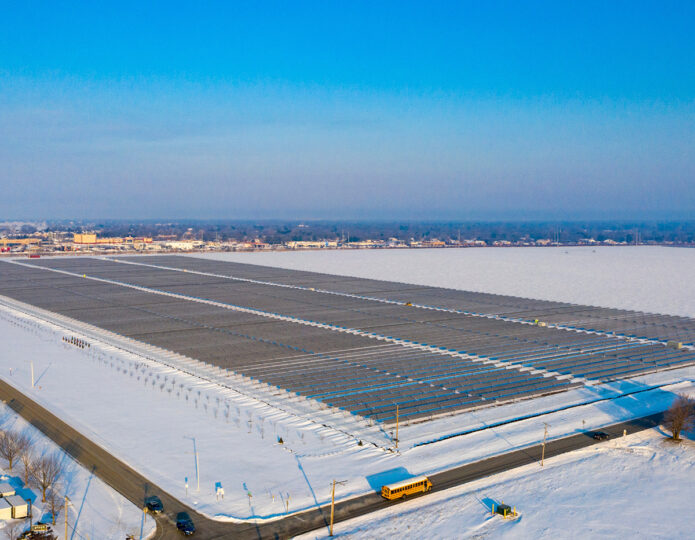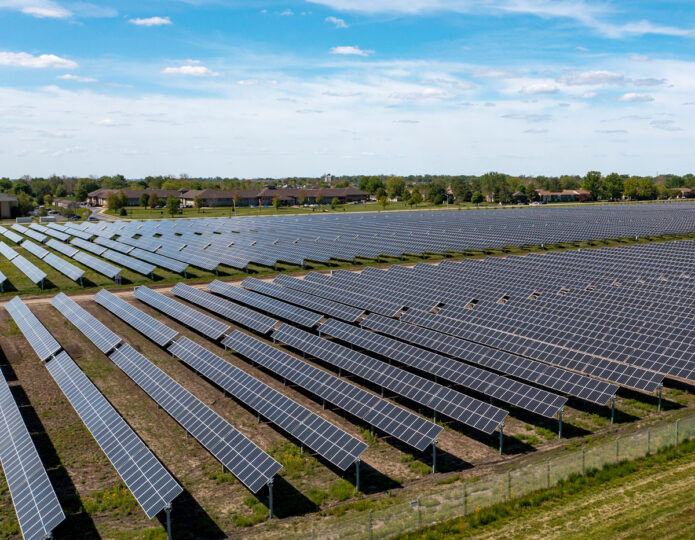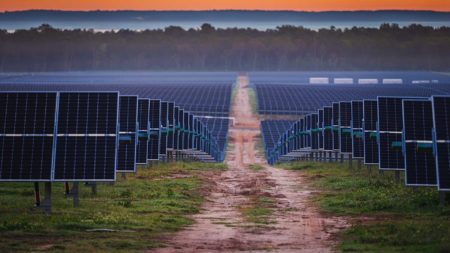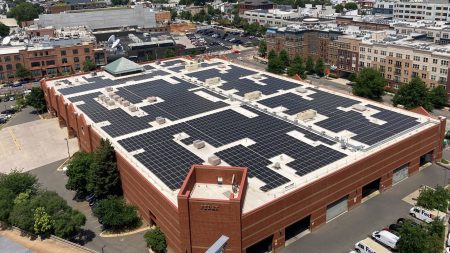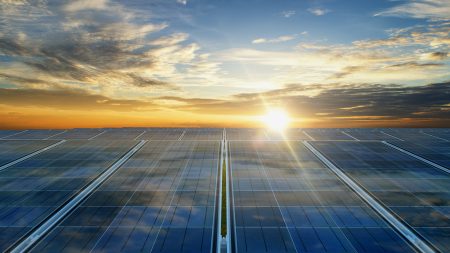In 2021, Sol Systems completed the University of Illinois at Urbana-Champaign’s Solar Farm 2.0, a 54-acre, 12.32 megawatt (MWdc) solar array that nearly tripled the university’s existing on-site renewable energy generation. The project will provide 20-years of flat-rate electricity to the University through a power purchase agreement contracted with Sol Systems, who owns and maintains the project. In addition to its technologically advanced features like bifacial panels (which also capture reflected light on the back side of the panels) that sit on single-axis trackers, Solar Farm 2.0 provides many additional community and environmental benefits that maximize its positive impact.
Learn more about the project through University of Illinois Urbana-Champaign’s press release.
Project Impacts
Zero Waste Construction
Approximately 94% of the project’s construction-related waste was recycled or otherwise diverted from landfills through zero-waste construction practices. This process prevented as much as 45 tons of materials from reaching landfills, including the project’s construction packaging, plastics, wood pallets, and other refuse.
Pollinator Habitats
Solar Farm 2.0 incorporates native seeding throughout the 54 acres of land in which the solar project lies that bring extensive ecological benefits. The 21 different plant types create a natural habitat for a variety of local and migratory birds and beneficial insects, bolstering their populations and expanding their positive impact on the surrounding ecosystem.
An Opportunity for Education
Sol Systems worked with students in the Institute for Sustainability, Energy, and Environment’s campus wide sustainability minor to access the carbon footprint of Solar Farm 2.0 from start to finish, including hands-on measurement of the onsite carbon levels that occur through soil sequestration. Not only has this work helped to lay groundwork for Sol sustainability efforts in its future projects, students were given direct, real-world experience working with solar energy, one of the many benefits provided to students at schools with accessible, onsite solar energy available to study.
